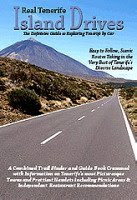 Last year, just as we were about to start writing ‘Going Native in Tenerife’, we were visited by a friend who’d never stayed in Tenerife before. Normally she sticks to visiting the neighbouring island of La Gomera.
Last year, just as we were about to start writing ‘Going Native in Tenerife’, we were visited by a friend who’d never stayed in Tenerife before. Normally she sticks to visiting the neighbouring island of La Gomera.Like many discerning travellers, she considered La Gomera as more unspoilt than its allegedly brasher and over-developed bigger neighbour.
So we were keen to show her the Tenerife that we knew; the Tenerife which we were about to write about in ‘Going Native in Tenerife.’
A blissful week was spent wandering around the charming Casas de los Balcones in Tenerife’s most noble township of La Orotava, heading away from the crowds and deep into the lunar landscape of the crater around Mount Teide’s base, chilling out listening to live bands at a traditional fiesta on the beach in celebration of Midsummer’s day, watching goats and horses being dragged and ridden into the sea as part of a tradition which pre-dates the conquest of the island, eating fish which looked like a parrot, strolling through banana plantations to beautiful quiet coves and delving deep into ancient laurisilva forests and through a village where people still live in caves to stand at a mirador overlooking an epic landscape which looks as though it belongs in the South American jungle.
It wasn’t until the end of the week, that we told her that we’d just been commissioned to write a guidebook for Tenerife which was going to include the sort of things we’d done and places we visited during her stay (and obviously, much, much more). What was her response?
She told us that she wasn’t sure it was such a good idea to write a book which spread the word about the real face of Tenerife…because if more people knew about the charming, cultural, historic, picturesque and spectacular Tenerife which exists outside the resorts, then the island might really be spoiled.
So, any discerning traveller out there interested in finding out what Tenerife is actually like and seeking to enjoy similar experiences as our friend should buy ‘Going Native in Tenerife’, but please, please don’t tell anyone about it, we don’t want to ruin this gem of an island.






